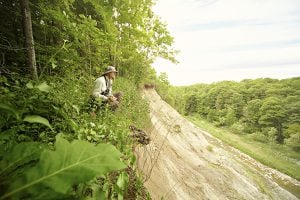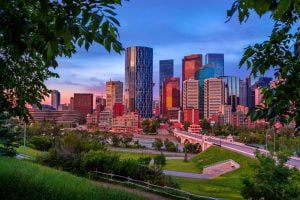Why the Port Lands?
Located at the end of a shipping channel, Leslie Lookout Park will have incredible views, not just of vessels coming in, but of Toronto’s skyline as well — perfect for sunrise and sunset. “This is maybe going to be one of the best neighbourhoods in Toronto because it’s close to the lake, it’s close to nature, which is spontaneously generating itself on the Leslie Spit,” says Marc Hallé, co-president and landscape architect for CCxA, the firm in charge of the park’s design. “Ideally, it would be nice if the Don Valley was connected with the shoreline of Lake Ontario, all the way down to Leslie Spit, a big migration destination. It’s probably the richest habitat on all the Great Lakes.”
The Port Lands are not going anywhere, explains Hallé, as Toronto is very much a “concrete canvas.” But Leslie Lookout’s great location will help to interlock green spaces and act as a stepping stone for habitat connectivity.
“It’s a bit of a novel approach for parks of this stature because it’s a highly visible park; most of the parks along the waterfront are highly designed and controlled,” says Heather Schibli, a landscape architect and ecologist for Dougan & Associates, an ecological consulting and design firm working with CCxA to develop the park.
What makes Leslie Lookout so special
One of Leslie Lookout Park’s main features will be a mini forest, one of the first for the City of Toronto. Containing nearly 5,000 plants representing 45 tree species, the mini forest will increase plant diversity and the overall health of the city’s forest. Taking cues from the Miyawaki method (a technique used to create dense forests with native plants), the mini forest will also act as a sound barrier around the park’s perimeter.










